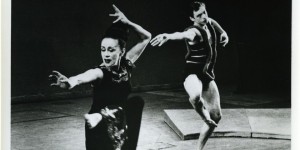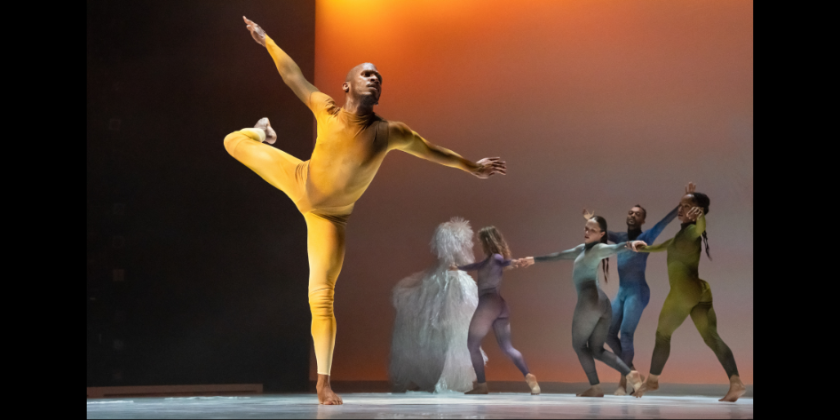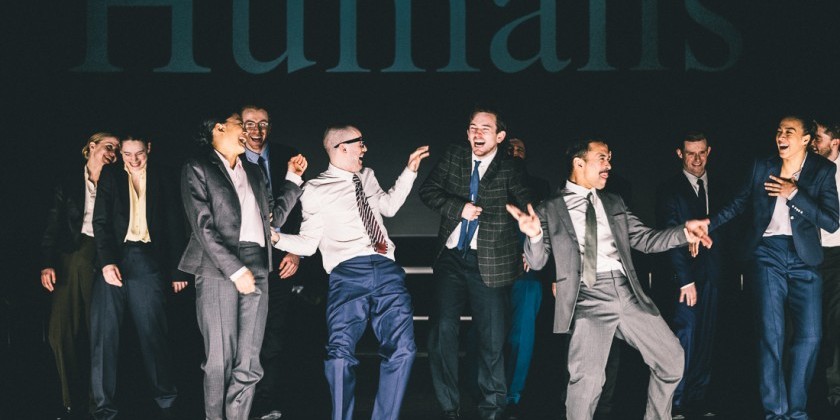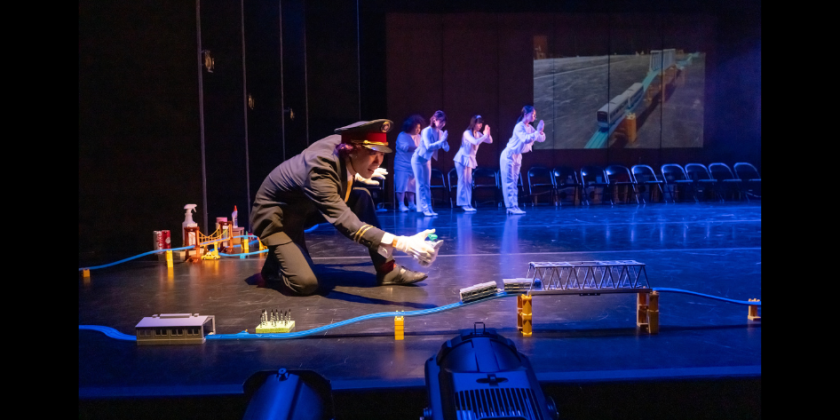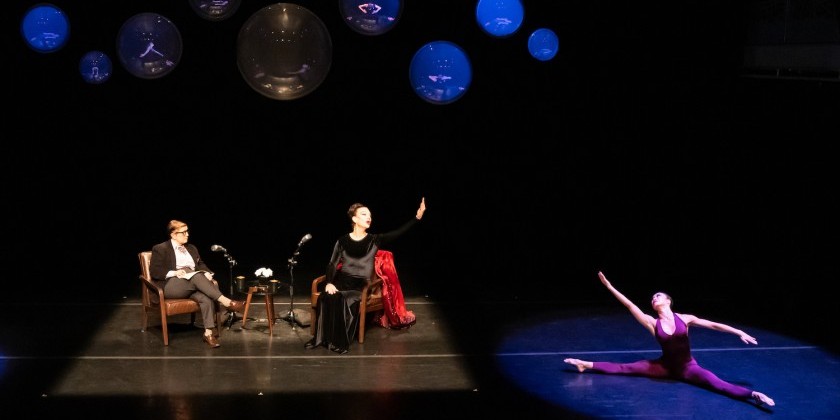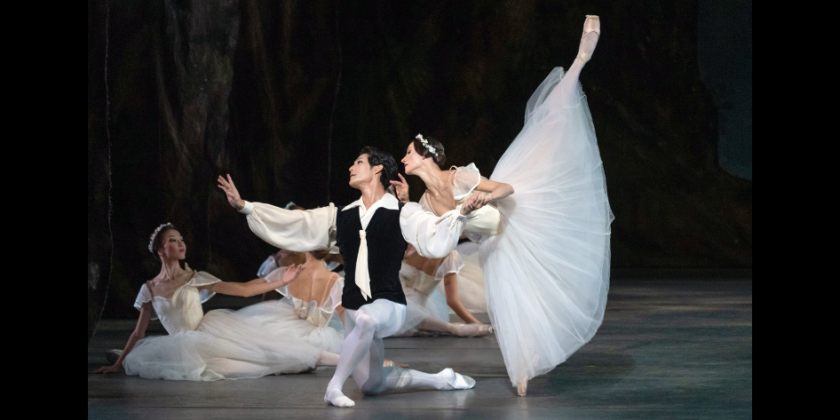Impressions of Martha Graham Dance Company's 2015 Season
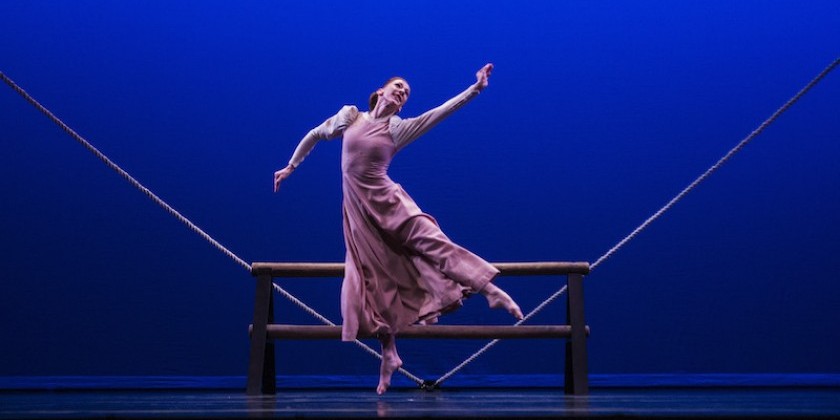
"Shape and Design" at The Joyce
MARTHA GRAHAM DANCE COMPANY- at the Joyce Theater - February 10th through Feb 22nd 2015
In a nation as obsessed with wealth as ours continues to be, the distance between art and advertising grows narrower by the hour.
Witness the decision by the Martha Graham Dance Company, which returned to the Joyce Theater last week, to open each program with a short film by Peter Arnell, the commercial photographer best known for promoting the fashion brand DKNY.


Arnell’s slick production for Graham features images of the dancers captured in rehearsal and transferred to a shadowy never-never land. We see close-ups of a heroic chest, tattooed muscles and bodies pressed together suggestively. In a display of technical virtuosity, thousands of still photographs rapidly sequenced create the illusion of movement, while blurring and double exposures simultaneously reveal the filmmaker’s sleight-of-hand. Think of the late Sergei Eisenstein’s astonishment if he had lived to see this montage, a buff descendent of his film “The Battleship Potemkin.”
While ostensibly related to this season’s theme of “Shape and Design,” Arnell’s film spotlights those aspects of Graham’s work most appealing to a mass audience---the beautiful bodies clenched with emotion, and the sensual heat---without acknowledging the mytho-poetics and the quality of deeply personal, lived experience to be found in, say, Embattled Garden, one of this season’s spectacular Graham revivals. Despite its sophistication, Arnell’s film is still an advertisement; and its greatest achievement would be converting Martha Graham into a product consumers felt they could not live without.
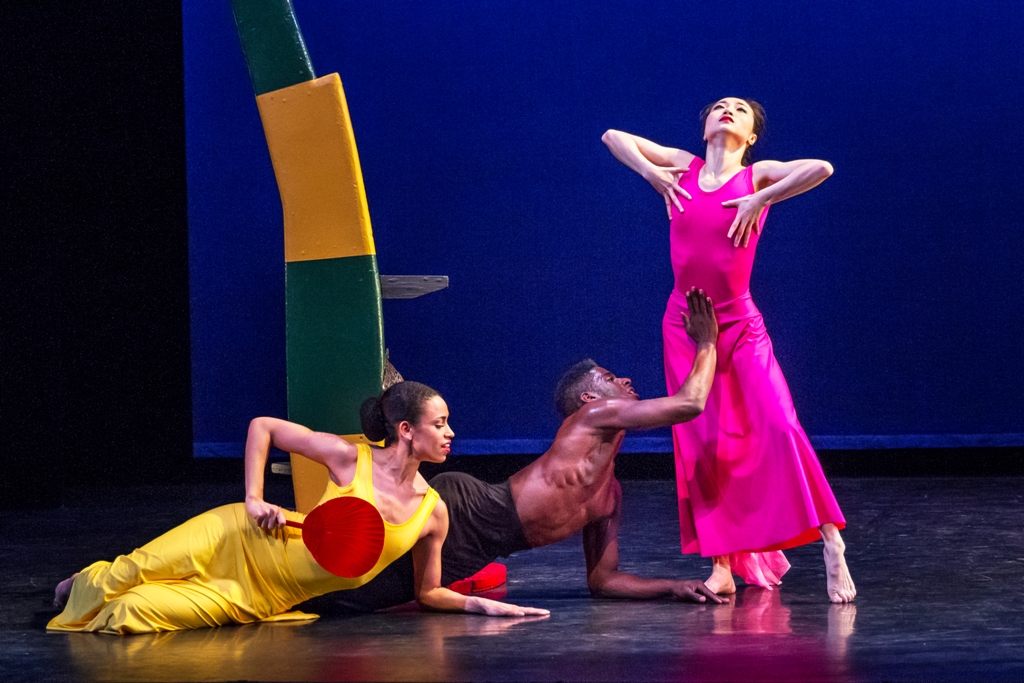
Showing the film to people who have already purchased tickets doesn’t help much, though. Certainly these screenings do nothing to alter the economic imbalance between for-profit and not-for-profit undertakings, which prevents arts organizations from exploiting the same tools businesses use. Arnell’s film begs the question, “What would happen if the film were shown outdoors? Or if the initials MGDC, like the initials DKNY, were spray-painted on the side of a brick building in SoHo, three-stories high and with images of the dancers’ bodies glimpsed inside the letters?” We’ll never know, because the Graham company can’t afford to rent the wall.
Still, Janet Eilber, the troupe’s feisty artistic director, deserves applause for keeping up with the hottest trends. Opening night also featured a parade of celebrities; and this season’s guests were both class acts. On opening night, Graham’s anti-war piece Steps in the Street was presented with a video backdrop designed by world-renowned architect Frank Gehry; and ballerina Misty Copeland (whose recognition factor exploded thanks to an Under Armour TV commercial) performed in At Summer’s Full, a new distillation of Graham’s Letter to the World.
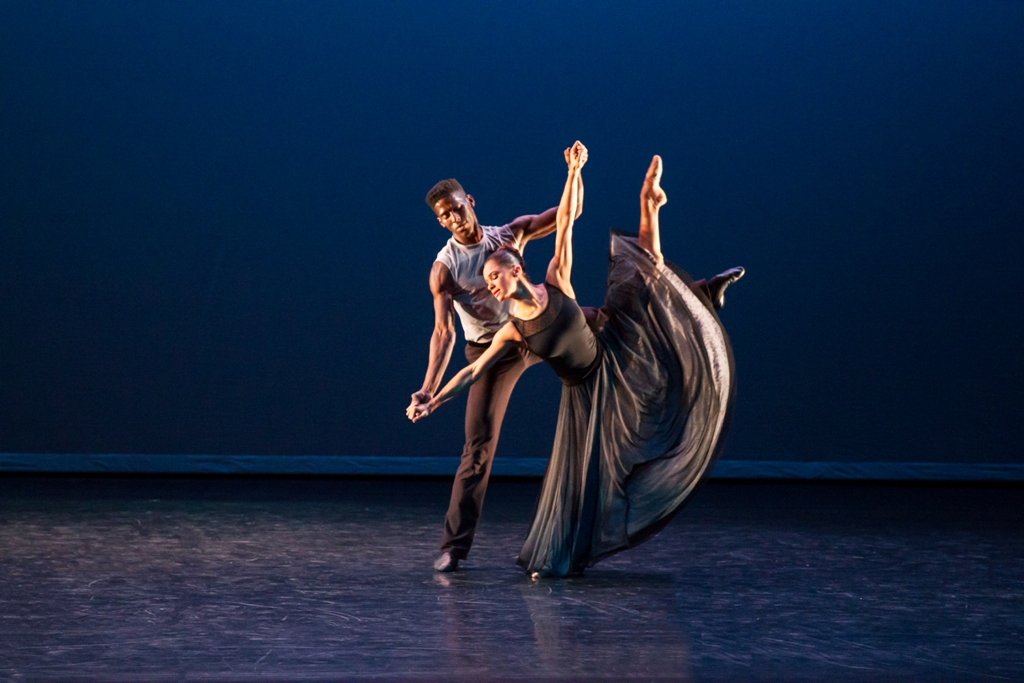
Gehry’s creation, an abstract design resembling two clouds containing loose tangles of string, had a life of its own, the strands thickening or thinning as the two masses converged in the center of the backdrop or drew apart. Viewers were free to project their own metaphors on these tangles, which might suggest a gathering storm or a maze of concertina wire. Unfortunately the restlessness of the image proved distracting, making it harder to appreciate Graham’s female cadre, their bodies converted into tense, black columns and their elbows jutting out as they embodied the apprehension and nascent resolve of women facing war’s devastation.
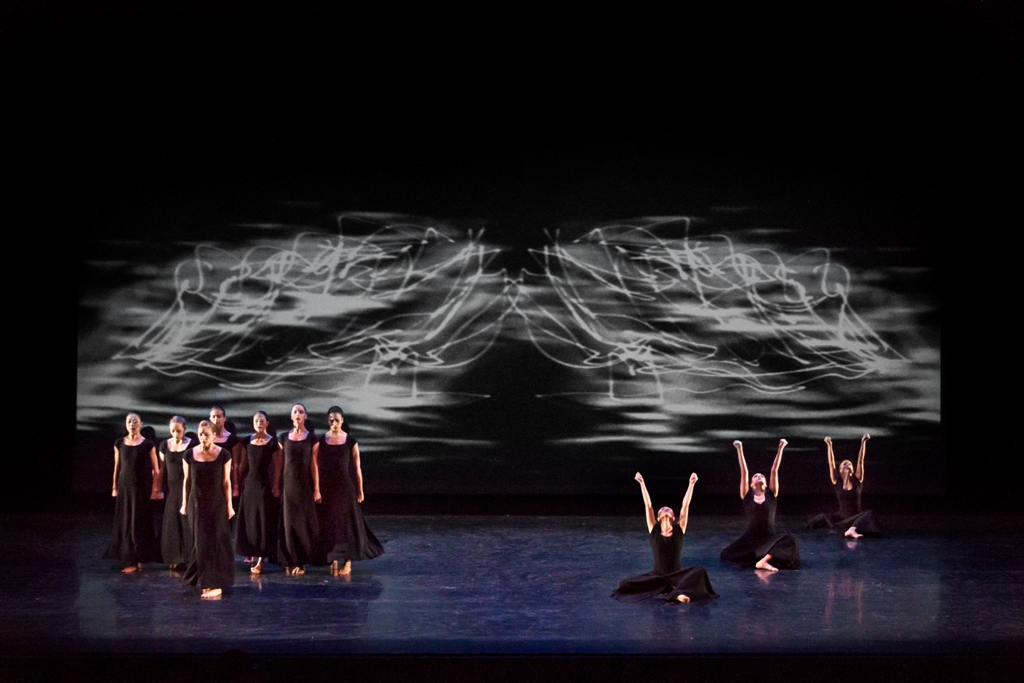
At Summer’s Full can be taken two ways. At its best, it represents a careful step advancing the reconstruction of Graham’s 1940 Letter to the World her homage to the life and poetry of Emily Dickinson. Or it could be simply the latest example of Graham’s heirs editing her masterpieces to placate impatient theatergoers. Previous efforts along these lines have been variously timid or bold—from the delicate pruning and coloring of Deaths and Entrances to the butchery of Clytemnestra.
At Summer’s Full reduces Letter to the World to a genteel divertissement in which couples promenade formally, the women resting a hand on a partner’s outstretched arm, with sundry solos and small groupings that hint at romantic pursuit, shyness or giddiness, intrigue and so forth. The recitation of Dickinson’s poetry, a provocative feature of the original dance, is omitted here. At one side remains the pseudo-Windsor bench designed by Arch Lauterer. This uncomfortable-looking piece of furniture hints at what the original dance was like, with the heroine torn between a lover and the stern figure of a Puritan ancestress, and with her mind divided between the real world and the imaginary. There is nothing uncomfortable about those parts of the dance that survive here, however. The overall impression of this reduction is of blandness, which may suit popular taste but serves neither Graham nor Dickinson particularly well.
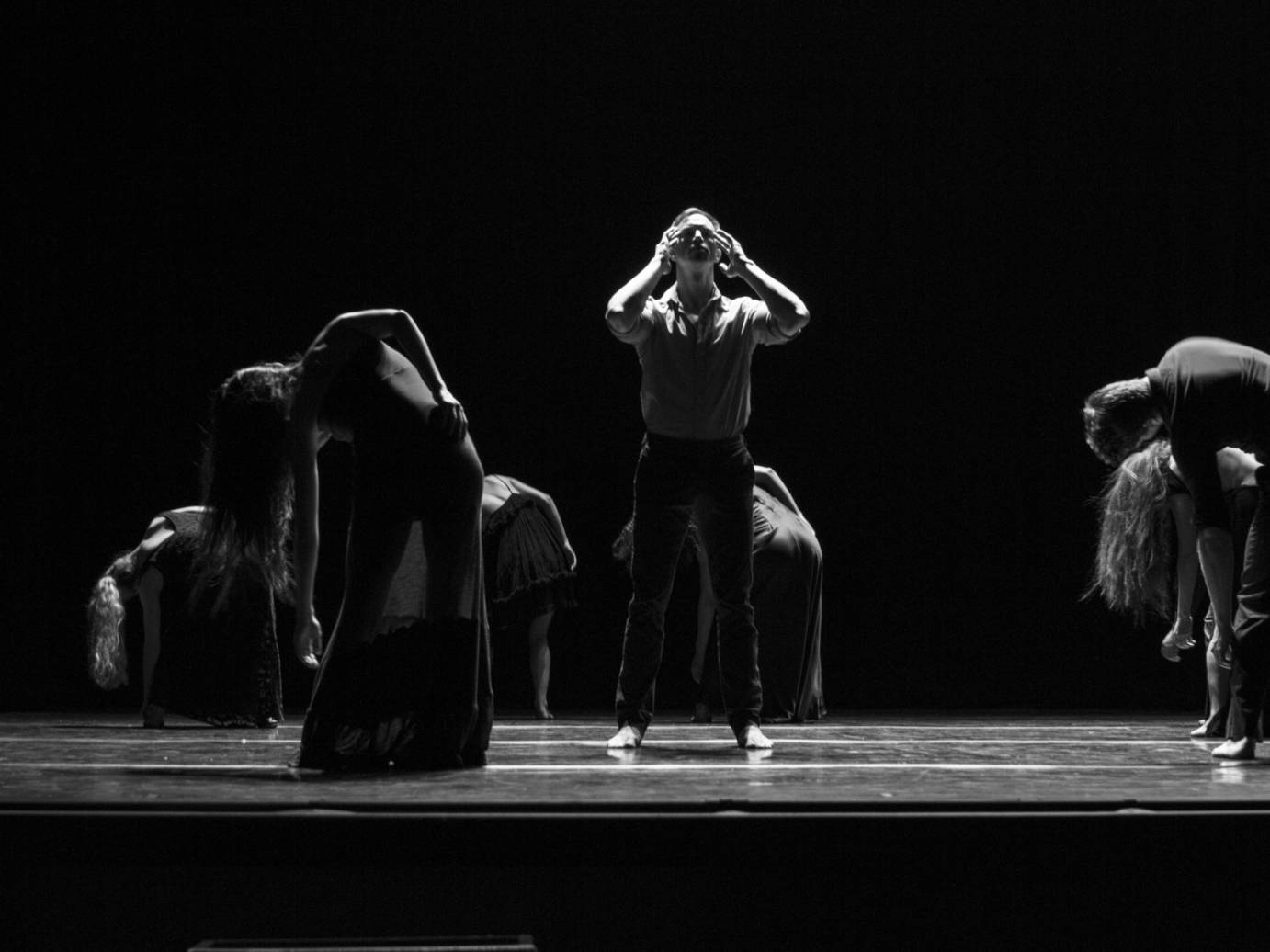
Bolder and fabulously successful is the Lamentation Variations series launched as part of a 9/11 memorial in 2007. This ongoing project was conceived as a way to perpetuate Graham’s influence on modern dance without encumbering young artists with her technique. Most of the choreographers commissioned to create new works inspired by Graham’s Lamentation, the striking 1930 solo with the dancer encased in a tube of purple fabric, have not been Graham-schooled. They have their own aesthetics, and, thus far, none of these choreographers has produced a dance as deferential to its model as, say, Picasso’s series of paintings dedicated to Las Meninas, which for all their Cubist deconstructions remain recognizably indebted to Velázquez. The Lamentation Variations are cunning in their references and delightfully inventive.
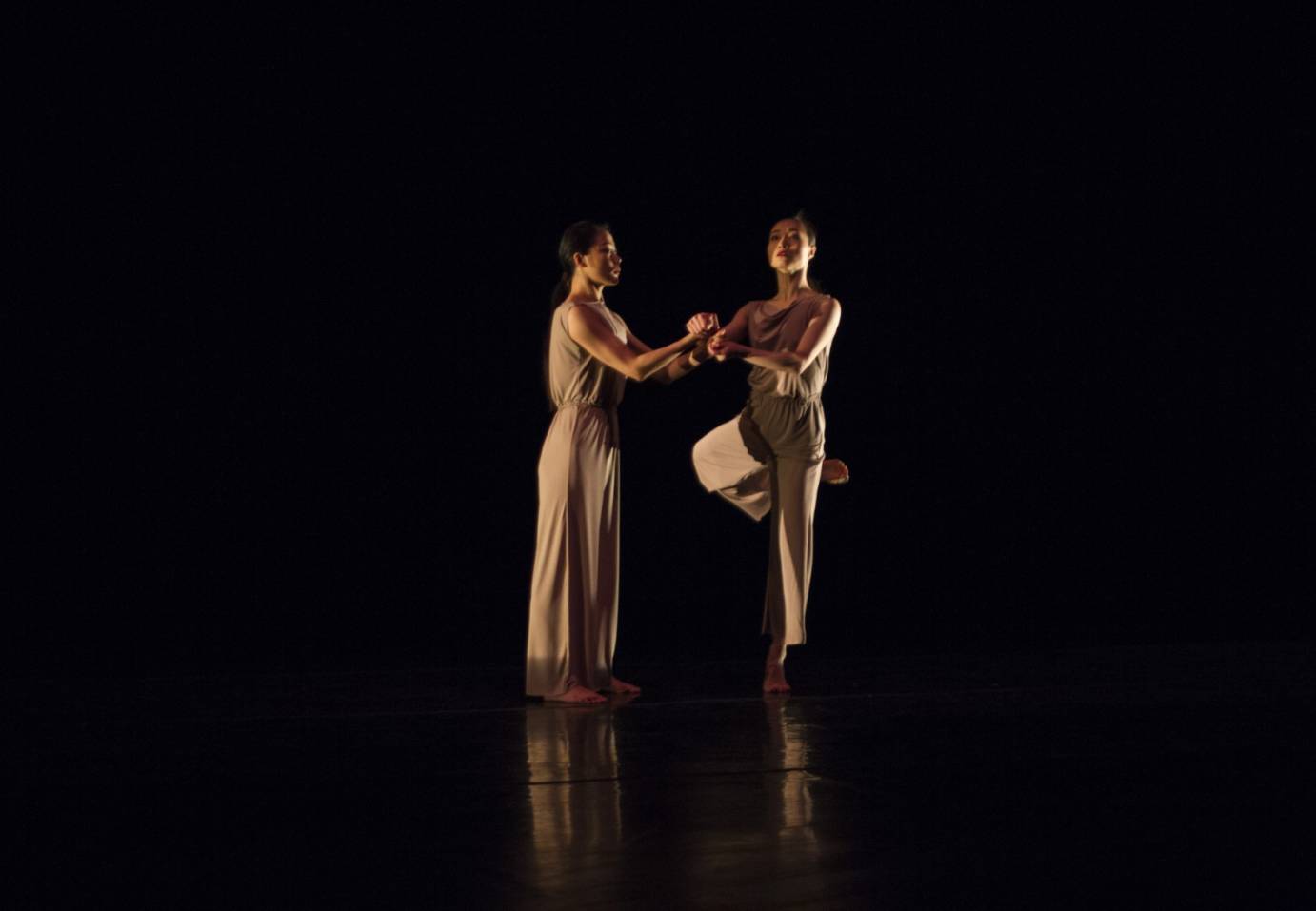
This season four new variations were added to the Lamentation series, by artists as dissimilar as Kyle Abraham, Michelle Dorrance, Liz Gerring and Sonya Tayeh—the latter a veteran of “So You Think You Can Dance.” The company performed them three at a time, mixed with older variations by Larry Keigwin and Bulareyaung Pagarlava, and preceded by a film of Graham performing her seminal solo. The film is already a deconstruction, offering a close-up of Graham’s hand sheathed in fabric; panning to one side to examine the aerodynamic stretch-marks in the costume; and zooming in on the dancer’s upturned face floating eerily inside her cowl.
None of the new works is a solo, although they may contain solos, and none of them includes the Lamentation bench. (Tracing Graham’s historic influence, viewers may recall Talley Beatty’s Mourner’s Bench, leading in succession to the provocative bench imagery in Kyle Abraham’s The Watershed, last year.)
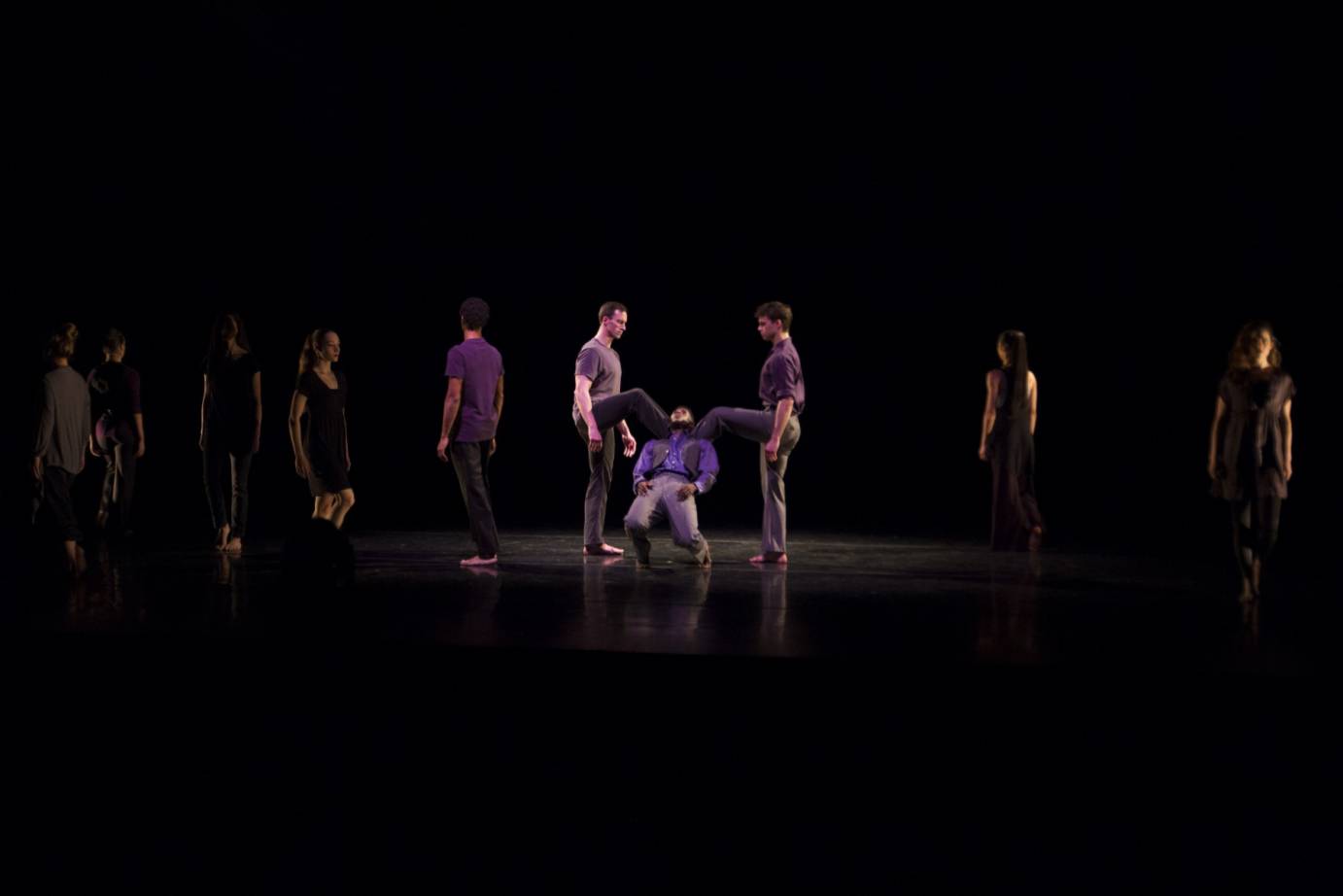
Liz Gerring’s variation hinges on a contrast between a soloist, present from the outset, and a trio of joggers whose arrival is delayed. Why are they late? Perhaps it’s because they are prone to freezing in place—interrupting the flow of casual movement with breaks in time that connect the everyday with the eternal. While the three joggers may travel in wide arcs, the soloist’s path is more often rectilinear. The soloist (Lloyd Knight and Ying Xin take turns) also seems more contemplative, measuring the space between raised hands or gauging the distance between hands held down to touch the floor. At the end, one hand crosses sharply behind the other, echoing the torque in Lamentation.
While Gerring’s piece feels airy and cerebral, as if it were plotted on graph paper, Abraham’s variation has the intimacy of a duet. Set to the caressing piano music of Gabriella Montero’s Continuum, the dance is performed either by a pair of women or by a pair of men. Abraham has borrowed (among other things) a gesture in Lamentation where the soloist wraps an arm tightly around her waist. The gesture reappears literally in his dance, and its curviness is also abstracted. In Abraham’s duet, however, a person’s arms are more commonly used to cradle and support a loved one. The connection between the two dancers matters hugely; but that connection breaks when, at the end, one dancer steps away from the other. Extracting maximum poignancy from a small and unremarkable movement, that final step is like the hard-to-pinpoint moment when breathing ceases and a dying person slips beyond recall.
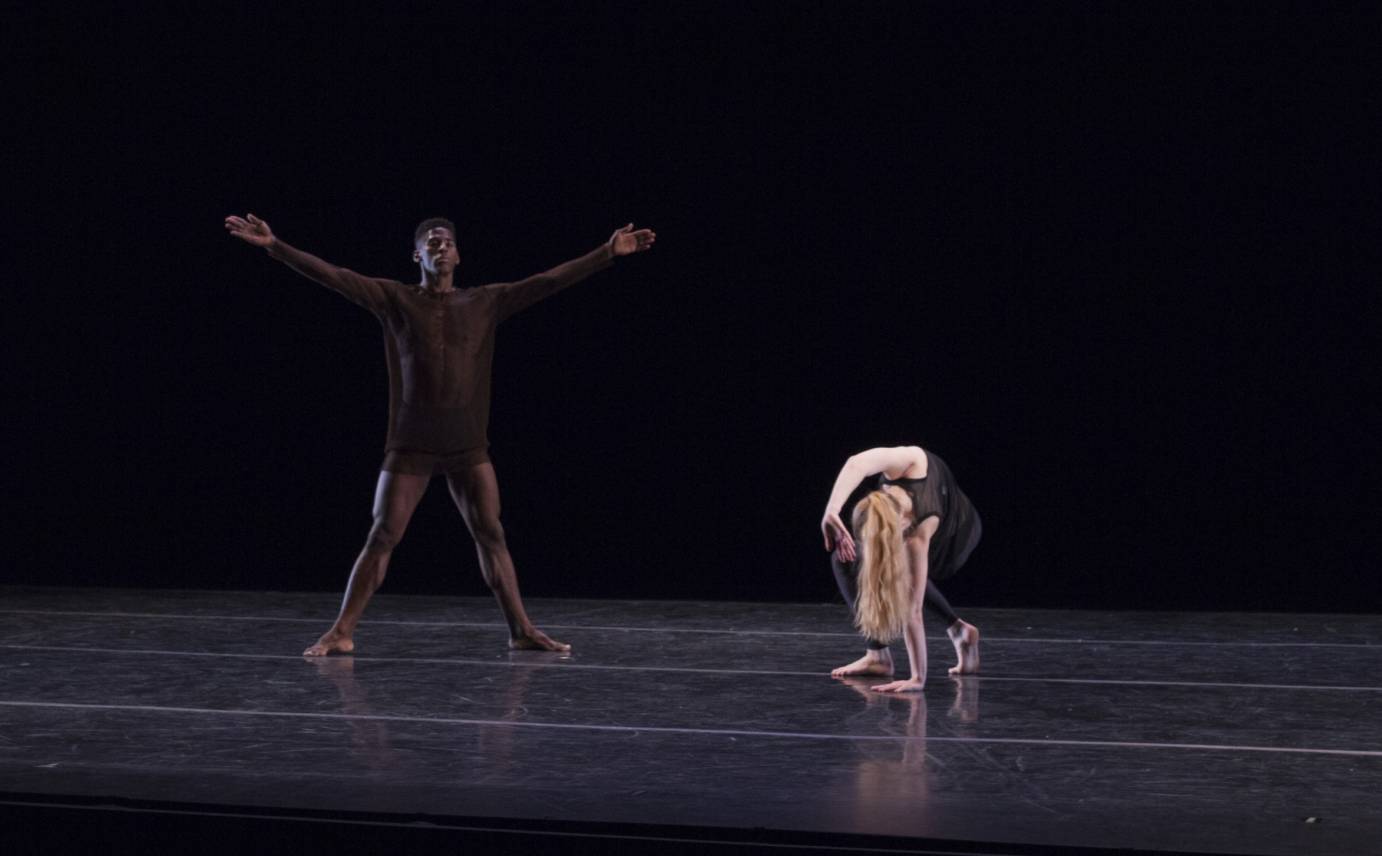
Dorrance’s variation is also haunted, but by the sound of her own taps. We hear her off-stage in the beginning, and later the knocking recurs like a memory underlying the moody bass guitar of Jaco Pastorius. Though her dance is populous and busy, with dancers breaking away from an opening line to march and pivot at sharp angles, it is also the most confining of this year’s variations. In the center, Lloyd Knight is held prisoner flanked by two men who catch him, block him and support him; and it’s easy to think of these human pillars as an ingenious substitute for the soloist’s costume in Lamentation.
The only one of these Lamentation Variations to disappoint was Sayeh’s: a barrel of flying, grappling monkeyshines so similar to the high-energy fare on television, and so remote from Lamentation, that it seemed pre-packaged rather than commissioned. Clearly there’s a risk in pandering, which is something that Martha Graham, despite her occasional displays of whimsy, was careful never to do.
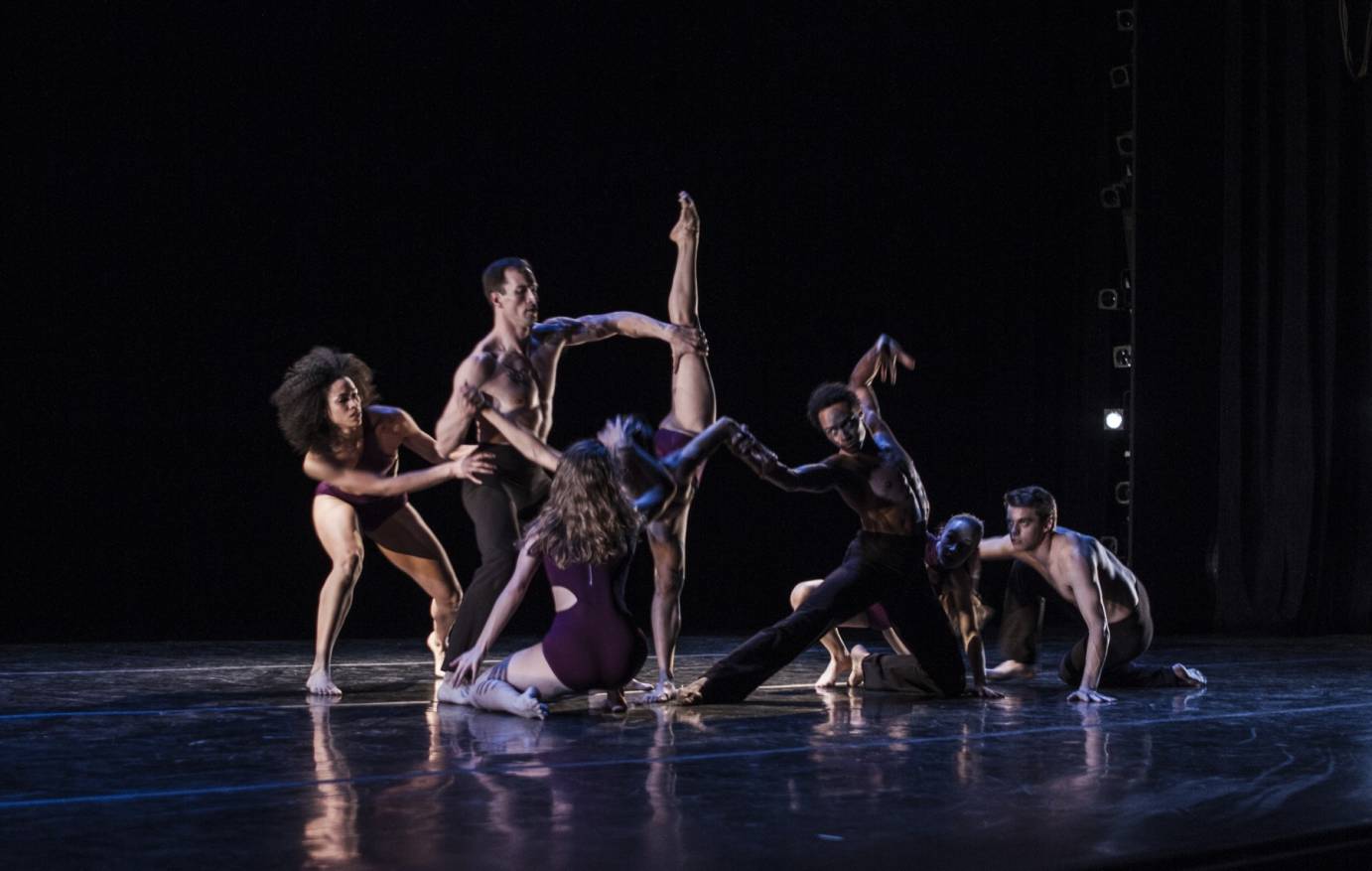
And, despite the adult subject matter of a local premiere called Rust, which concerns itself with torture, this risk extends to commissioning a piece from Nacho Duato. Viewers dismayed by the torture of prisoners and by the way it has eroded our government’s moral authority, should, of course, be pleased that a choreographer as prominent as Duato, and a dance company as distinguished and as widely traveled as the Martha Graham company have addressed the issue. Rust unquestionably will give the topic more exposure than earlier pieces like Jane Comfort’s bitterly satiric An American Rendition, or John Scott’s plaintive Fall and Recover.
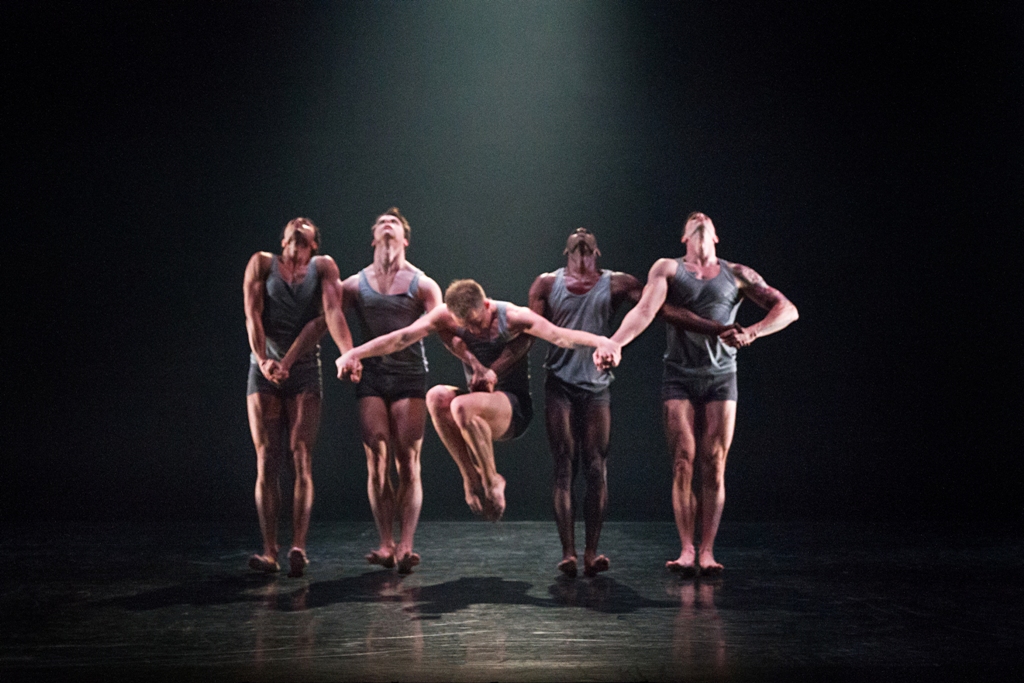
The problem with Duato’s Rust is that even tackling a subject like torture its primary motive is not outrage, or pity, or the search for a means of describing something so evil that viewers instinctively turn away. No, its primary impulse is the self-love that leads an artist to resort to hackneyed images of virtuosity and physical beauty, accessorized this time with flour-sack hoods and with an attitude of sanctimony. Rust is a beautiful dance in places. The cleverly arranged ensemble in which a prisoner has the living daylights beaten out of him is especially attractive, with its quick substitutions, and surprises and its abrupt changes in level. Cleverness isn’t the point, however. And when Duato isn’t being clever, he’s boring. The circular structure of the piece, which begins with Tadej Brdnik emerging from shadow to stand facing us, and ends with him in the same position---which we now recognize as post-traumatic stupefaction---is sorely unimaginative, as is the previous sequence in which, one by one, the hooded prisoners seated on the floor fall over on their sides.
Thank heavens for Annie-B Parson, and for the subversive shenanigans of her piece The Snow Falls in the Winter, which harbors such a profound distrust of what passes for reality that it is happy to knock out its remaining underpinnings. Parson borrows the scenario from Ionesco’s The Lesson, cutting the narrative into smaller fragments than usual by doubling the main characters---a teacher who bullies his pupil---and by layering scraps of text with movement passages. Tadej Brdnik and Carrie Ellmore-Tallitsch share the role of the professor; while Natasha Diamond-Walker and XiaoChuan Xie alternate as the pupil; with Lauren Newman as the grouchy maid left to answer the door by herself.
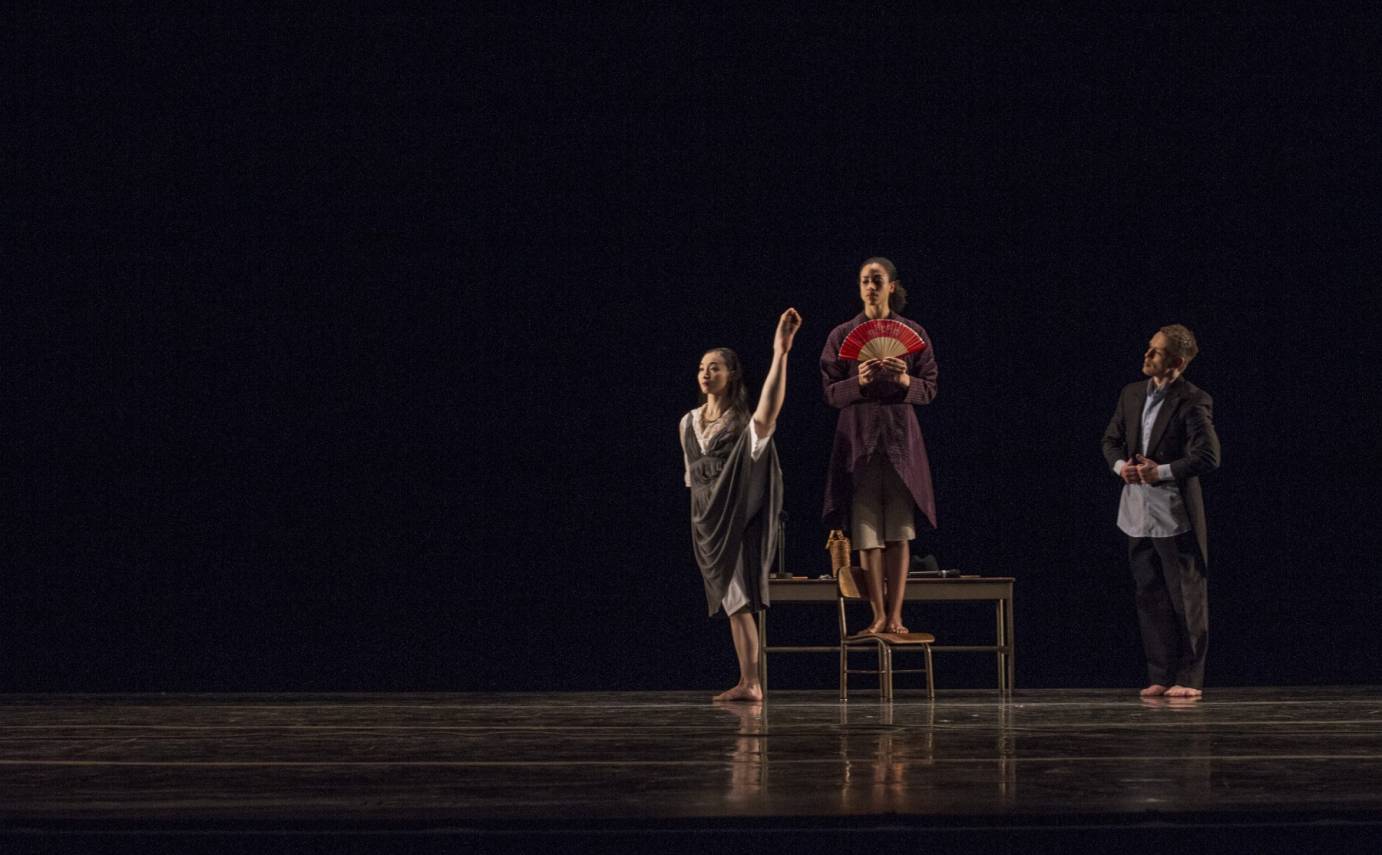
In this world of disputed stage directions and scrambled dialog, no one is given the opportunity to lie convincingly about torture, education or anything else. The dancers, however, are given scenery to chew. Brdnik and Xie make the most of it, offering sly characterizations. He adopts a sophisticated air, and somehow this professor’s dignity survives the moment when he balances between a school desk and a chair clapping his feet together like a toy monkey. Her pupil glows with enthusiasm, showing her willingness to please by holding a fan between her toes with her leg pointing skyward. Is it odd that amid the shambles of bourgeois illusions, the one thing that survives is the audacity of these star performers?
.jpg)
A Graham season naturally offers many opportunities to such artists, but it would be remiss to close without mentioning the company’s farewell to Brdnik and to Blakely White-McGuire, in Errand into the Maze. These veteran dancers, who steadfastly illuminated Graham’s works through years of turmoil, captured the essence of her dramatic theater once again on the last night of this season, when White-McGuire leapt onto Brdnik’s thighs and with maniacal determination pressed his Creature of Fear back into the ground. We could all use a dose of Martha Graham’s courage.




